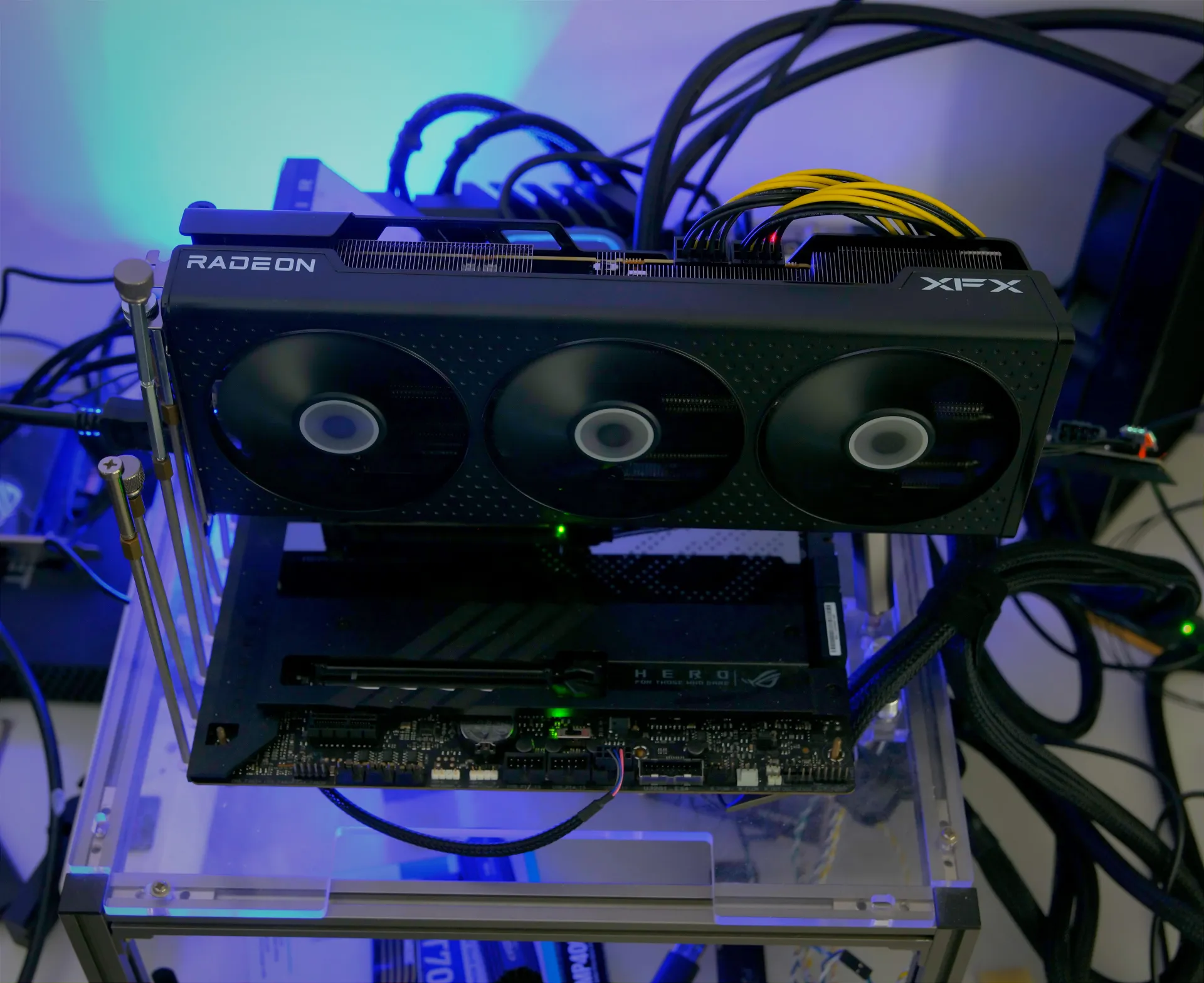Radeon RX 7600 XT 16GB – XFX QICK 309 review
Introduction Radeon RX 7600 XT 16GB
We review the XFX edition XFX QICK 309 Radeon RX 7600 XT 16GB, AMD’s recent addition to its desktop gaming GPU lineup. This GPU features enhanced memory capacity as its most significant upgrade. Priced at $329, it costs $60 more than its predecessor, the RX 7600 non-XT variant. The AMD Radeon RX 7600 XT, despite an increase in memory capacity to 16GB, maintains its 128-bit memory bus and utilizes 18 Gbps memory chips. This configuration keeps the memory speed and bandwidth consistent. The graphics card employs the Navi 33 GPU architecture, differing from the Navi 32, and includes 32 Compute Units along with 2048 Stream Processors. A notable enhancement is observed in the clock speeds, which have been elevated to game and boost clocks of 2.47 GHz and 2.76 GHz respectively, from the previous 2.25 GHz and 2.66 GHz. This model exhibits an increase in power consumption, drawing 190W compared to the former 165W. Despite this, it remains compatible with a single 8-pin power connector, although designs indicate the possibility of dual connector usage. Physically, the RX 7600 XT is equipped with DisplayPort 2.1 connectors as a standard, while the RX 7600 variant may feature DisplayPort 1.4a specifications.

| AMD Radeon RX 7000 Specifications | |||||||||||
| Radeon RX | 7900XTX | 7900 XT | 7800 XT | 7700 XT | 7600 XT | 7600 | |||||
| Architecture | RDNA3 (TSMC N5) | RDNA3 (TSMC N5) | RDNA3 (TSMC N6) | RDNA3 (TSMC N6) | RDNA3 (TSMC N6) | RDNA3 (TSMC N6) | |||||
| GPU | Navi 31 XTX | Navi 31 XT | Navi 32 XL | Navi 32 XT | Navi 33 | Navi 33 | |||||
| GPU Clusters | 96 CUs | 84 CUs | 60 CUs | 54 CUs | 32 CUs | 32 CUs | |||||
| FP32 Cores | 6144 | 5376 | 3840 | 3456 | 2048 | 2048 | |||||
| Boost Clock | 2.5 GHz | 2.4 GHz | 2.43 GHz | 2.54 | 2.76 GHz | 2.625 GHz | |||||
| Memory | 24GB G6 | 20GB G6 | 16GB G6 | 12 GB G6 | 16GB G6 | 8GB G6 | |||||
| Memory Bus | 384-Bit | 320-Bit | 256-Bit | 192-Bit | 128-Bit | 128-Bit | |||||
| Memory Speed | 20 Gbps | 20 Gbps | 19.5 Gbps | 18 Gbps | 18 Gbps | 18 Gbps | |||||
| L3 Cache | 96 MB | 80 MB | 64 MB Gen2 | 48MB Gen2 | 32 MB Gen2 | 32 MB Gen2 | |||||
| Board Power | 355W | 315W | 263W | 245W | 190W | 165W | |||||
| Power Connectors | 2 × 8-Pin | 2 × 8-Pin | 2 × 8-Pin | 2 × 8-Pin | 1 X 8-Pin | 1 X 8-Pin | |||||
| PCIe Interface | Gen4 X16 | Gen4 X16 | Gen4 X16 | Gen4 X16 | Gen4 X8 | Gen4 X8 | |||||
| MSRP | $999 | $899 | $489 | $449 | $329 | $269 | |||||
| Launch Date | December 2022 | December 2022 | September 2023 | September 2023 | January 2024 | May 2023 | |||||
Performance-wise, the RX 7600 XT is designed to enhance gaming experiences at 1080p and 1440p resolutions with maximum settings, including ray tracing capabilities. AMD positions this model in comparison to the RTX 2060 and RTX 4060, especially when used with FSR2/3 or DLSS 2/3 technologies. However, due to the variation in these technologies, direct performance comparisons can be complex. The RX 7600 XT is aimed to compete with the RTX 4060 non-Ti variant in the market. The Radeon RX 7600 XT is released at a price point of $329. This pricing places it slightly above the lower-end RTX 4060 models but remains more affordable than the RTX 4060 Ti 8GB variant.
We review the XFX QICK 309 7600 XT today as AMD is not distributing reference cards. This graphics card is designed with a 6+2 phase power delivery system, enhancing its performance and stability. It incorporates the QICK 309 BIOS, which is specifically configured to support an additional 15W power beyond the standard reference specification, contributing to improved performance capabilities. The card also offers an increased boost clock speed of 44MHz (Boost 2810 MHz) providing a slight edge in processing speed. For thermal management, the card employs thermal pads strategically placed between the heatsink, the backplate, and the printed circuit board (PCB). This design utilizes the backplate as an extra heat spreader, aiding in more efficient heat dissipation. The card features a nickel-plated solid copper cold plate, efficiently transferring heat from the GPU to the heatsink. Additionally, the GDDR6 memory chips are cooled using an aluminum base, ensuring optimal temperature regulation for all critical components. The cooling system includes three 90mm fans, each with 13 blades, engineered for high performance. These fans are configured to automatically stop when the card’s temperature falls below 50°C, reducing noise and energy consumption during lower loads. This fan stop feature is enabled by default, offering a balance between efficient cooling and energy savings. But let’s head into the review.
